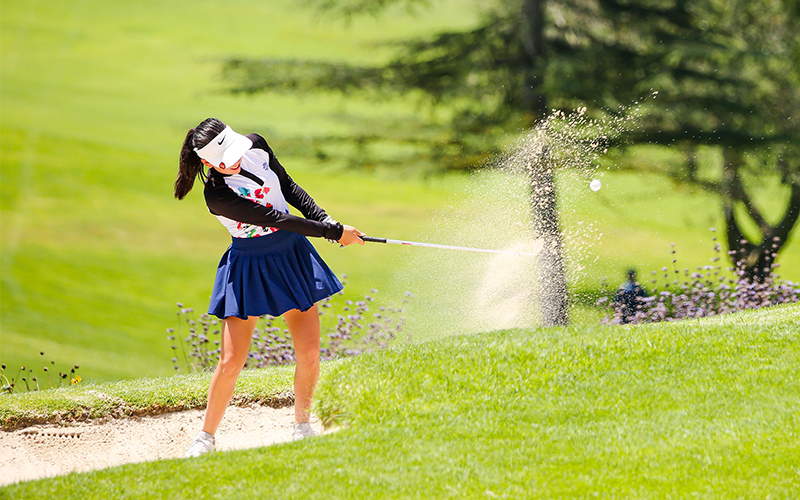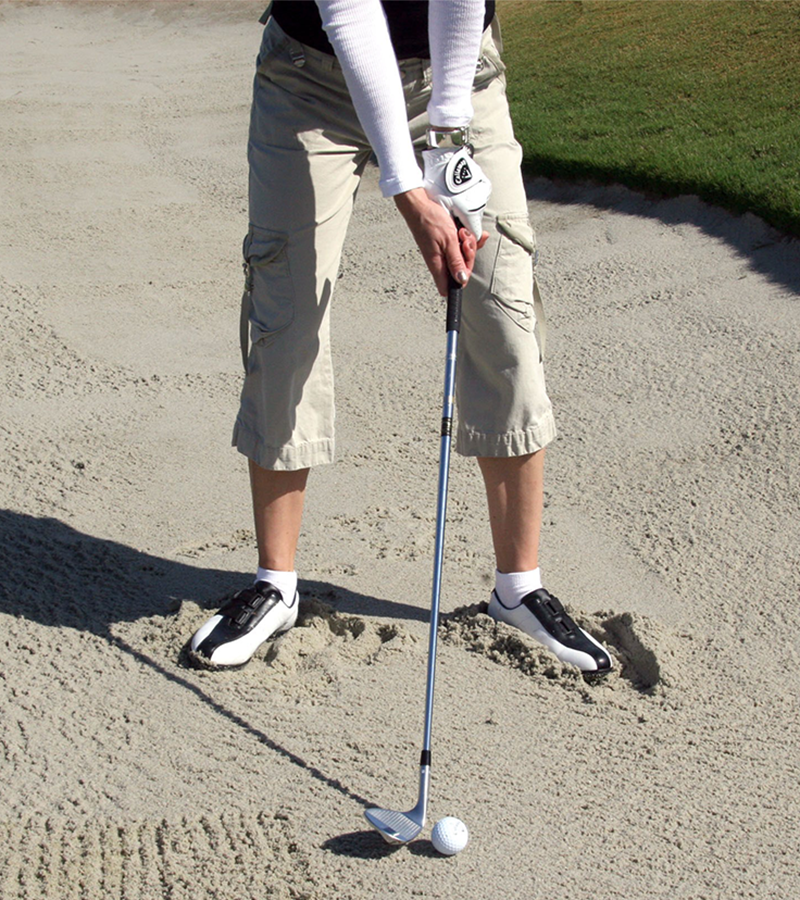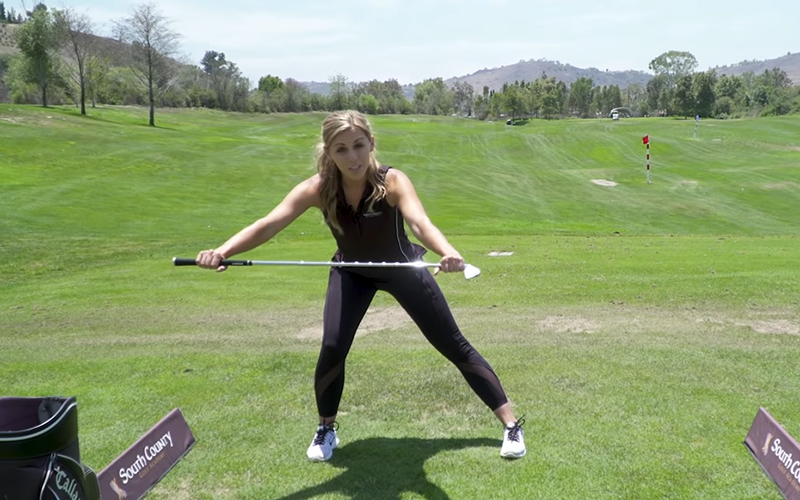Simplifying the 3 Scariest Shots in Golf
By: Tina Mickelson, PGA - Oct 18, 2023

There are many shots in the game of golf that can be downright scary. Fear leads to tension, which affects both your full swing and short game. Whenever I’m afraid of something, I find comfort in breaking it down and simplifying each component of the situation. If I can address each part individually, then the sum of the parts is much less daunting. The same goes for golf.
One of the first questions I ask my students when assessing their overall golf game is, “What situations or golf shots cause you the most anxiety?” If we can’t identify where the fear is coming from, we can’t address it and, ultimately, overcome it. Below you will find the three most common answers to that question, along with a simplified approach to tackling them while out on the golf course. Keep in mind that you should be practicing these shots as well as working on them with your local PGA or LPGA golf professional, but when you are in the middle of a round and you find yourself uneasy about one of these shots, you will at least have a better understanding of how to best execute the shot and get yourself through the round.
BUNKER SHOT

Many golfers fear the standard greenside bunker shot. All logic and competence seem to go out the window the minute the ball trickles into the sand. This is not the time to play a detailed master class in your head about all the specifics of a greenside bunker shot. Nope. You just want out. And there is plenty of time after your round to revisit that master class … or take a bunker lesson … and practice, practice, practice so the next time you find yourself in a bunker, you feel more comfortable and confident about your ability to execute a graceful exit. So let’s break this down:
- At set up, turn your toes out about 45 degrees, so your feet are in the shape of a “wide V.” This promotes a shallower swing, as opposed to a swing that is too steep. A steep swing will cause the clubface to dig into the sand instead of allowing it to bounce through the sand and under the ball.
- Maintain a firm grip. A firmer grip will guard against the club moving or twisting in your hand when it meets the resistance of the sand.
- Play the ball slightly forward in your stance. This will ensure you hit the sand first instead of the ball, allowing the ball to exit the bunker with the sand.
- Place most of your weight on your front foot to act as a stable base and promote proper weight distribution during the swing.
- In your follow through, keep the club moving as low to the sand as possible as opposed to trying to “pick the ball up” out of the sand. It helps to guard against hitting the ball thin.
- Don’t decelerate. Make sure you accelerate through impact, finishing on your front foot. You want your clubface to get through the sand with enough force to blast the ball out with the sand as it exits the bunker.
FAST DOWNHILL PUTT
Fast downhill putts make every golfer uneasy. Players often strike the ball on the toe of the putter face in an effort to decrease power at impact in hopes of better controlling the speed. The problem with this, however, is the tendency for the putter face to twist at impact, causing the putt to start off line. Another way to decrease speed on downhill putts without running the risk of the putter face twisting is to grip down (and I mean WAY down) on your putter. Grip down so far that your hands are almost on the shaft. Take a normal putting stroke, striking the ball in the center of the putter face. You will find a decrease in power without having to worry about your putter face twisting. It will also alleviate some doubt in the putt because you are incorporating your regular putting stroke as opposed to trying to hit the ball on the toe of the putter face, which is not something we tend to practice on a regular basis.
SIDEHILL LIE: BALL BELOW FEET

The sidehill lie is awkward and intimidating because not only do you need to incorporate a few extra swing thoughts, but it can be tough to keep your balance as well. Keep these simple thoughts in mind when you find yourself with a sidehill lie, with the ball below your feet.
- Slow down your swing just a bit. It allows you to better keep your balance while giving you added control.
- Stand a little closer to the ball than you would in your regular address position. This will keep you from having to reach for the ball, which will give you better balance at impact.
- You want your backswing to be more vertical than normal, which will help you maintain proper posture throughout the swing and make it easier to keep your balance.
- Keep in mind the ball will have a tendency to go a bit right so adjust for that in your set-up.
- Utilize every last inch of that grip, meaning grip up as far as you can (opposite of gripping down). With the ball being below your feet you want the club to be as long as possible so it can easily reach the ball.
- Already mentioned but important enough to mention again: swing slow and controlled. Swinging too hard and fast will cause you to lose your balance and any missed shot will be magnified.
Again, keep in mind this is a simplification of these shots. A lesson with your local PGA or LPGA golf professional will include more details, as well as swing changes that tackle your own personal challenges with your golf game. But when in doubt, implementing these swing thoughts will get you out of trouble and on to your next shot so you can better enjoy your round.

